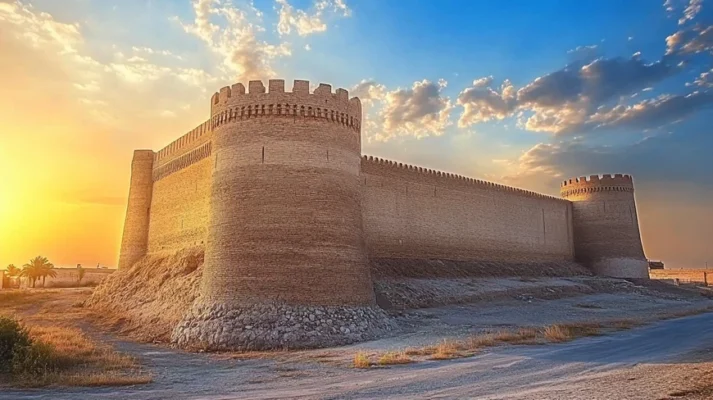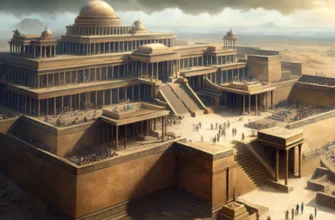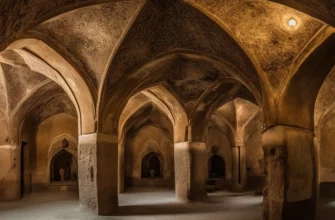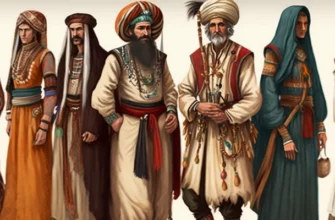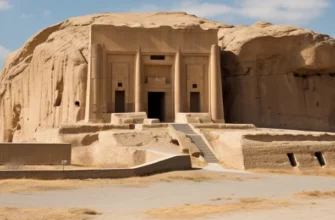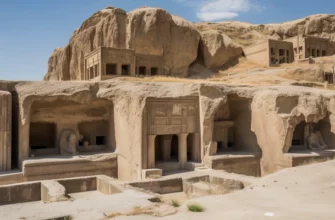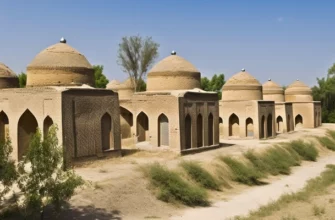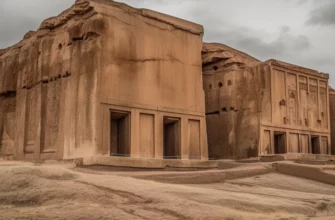Kerman, a city in ancient Iran, is one of the oldest cities in Iran, located in the southeast of the country. Founded in the 3rd century AD during the Sassanid era, it has been an important commercial, cultural, and strategic center since ancient times.
Thanks to its location near the Great Silk Road, Kerman played a key role in trade between the East and West. The city is famous for its unique architectural heritage.
Among the most famous sights are the magnificent Arg-e Bam citadel, traditional bazaars, mosques, caravanserais, and the Shazdeh Gardens, one of the masterpieces of Persian garden architecture. Kerman is also known for its carpet weaving, copperware, and ceramics.
Today, Kerman combines ancient grandeur with modernity while preserving its cultural identity. The city attracts researchers, tourists, and anyone interested in the history and rich heritage of Iran.
- Foundation of the city
- Kerman during the Islamic dynasties
- Architecture and cultural heritage
- Ancient fortresses and citadels
- Mosques, bazaars, and caravanserais
- Traditional crafts and carpet weaving
- Natural features of the region
- Geographical location
- Climate and landscape
- Shazdeh Gardens and Oases
- Conclusion
Foundation of the city
The city of Kerman was founded in the 3rd century AD during the reign of the Sassanid king Ardashir I. It was originally called “Gehvar” and served a strategic function as an outpost in southeastern Iran to protect the empire’s borders and control trade routes. Thanks to its favorable location near the desert and mountain passes, Kerman quickly became an important center of trade and crafts.
In the centuries that followed, the city changed names and rulers, but did not lose its importance. Over time, Kerman became a center of culture, Islamic science, and architecture, playing a significant role in the development of southeastern Iran.
Kerman played an important role in the history of Persia as a political, economic, and cultural center in southeastern Iran. Thanks to its location at the crossroads of trade routes, including the Silk Road, the city became one of the main hubs for the exchange of goods between Central Asia, India, and the Middle East.
In the Middle Ages, Kerman was one of the largest centers for the production of fabrics and carpets, which were exported far beyond Iran’s borders. Its craftsmen were renowned for their skills in weaving, metalworking, and ceramics. Under various dynasties, including the Seljuks, Safavids, and Zand, the city retained its strategic importance and often became the scene of important political events.
In addition to its economy, Kerman was also a center of science, architecture, and religious life. Mosques, madrasas, and caravanserais were built here, which have survived to this day as monuments of Persian heritage.
Kerman during the Islamic dynasties
After the arrival of Islam in Iran in the 7th century, Kerman gradually integrated into the new religious and political system. Over the following centuries, the city was ruled by several Muslim dynasties, each of which left its mark on its cultural and architectural appearance.
During the Seljuk period (11th–12th centuries), Kerman became an important administrative center and developed rapidly. New mosques, madrasas, public baths, and bazaars were built. It was then that the formation of classical Persian urban architecture began, some of which has been preserved to this day.
During the Safavid period (16th–18th centuries), the city experienced a new heyday. Shiite Islam became the official religion, which influenced the appearance of religious buildings. During this period, crafts flourished, particularly the production of the famous Kerman carpets.
Despite numerous invasions, including those by the Afghans and Afsharids, Kerman retained its role as the spiritual and commercial center of the region. It became a symbol of the resilience and continuity of Persian culture in an era of change.
Architecture and cultural heritage
Kerman is a city with a rich architectural and cultural heritage that reflects the different eras and styles of Persian civilization. Over the centuries, a unique architectural landscape has formed here, combining religious, commercial, and defensive structures.
One of the most famous landmarks is the Arg-e Bam citadel, the largest mud-brick fortress in the world, which testifies to the high level of urban planning in medieval Iran. Although it was significantly damaged by an earthquake in 2003, its reconstruction continues as an important project for the preservation of history.
Equally impressive is the Ganjali Khan Bazaar, built in the 17th century. It is an entire architectural complex that includes a bathhouse, a mosque, a caravanserai, and shopping arcades decorated with skillful tiles and decorative paintings.
Kerman’s cultural heritage is also evident in its craft traditions, particularly carpet weaving. Kerman carpets are known for their delicate patterns, natural dyes, and high quality. They are considered among the best in the world.
The city is a center of Persian culture, where the traditions of calligraphy, music, and fine arts are preserved. Festivals, exhibitions, and cultural events are regularly held here, continuing Kerman’s spiritual mission as a center of art and history.
Ancient fortresses and citadels
The city of Kerman and its surroundings have preserved remarkable ancient fortresses and citadels that testify to its strategic and historical importance. The most famous is Arg-e Bam, the largest clay fortress in the world, founded before our era. It was a key point on the Silk Road and is impressive for its size and layout. Although it was damaged in the 2003 earthquake, it is currently being actively restored and is listed as a UNESCO World Heritage Site. Another important landmark is the Rayn Citadel, a well-preserved mud-brick fortress from the Sassanid period, which serves as a tourist center and an example of medieval architecture. The Sassanid era also includes the fortresses of Ardeshir and Doktor, located on the hills near Kerman. They were built for defensive and probably religious purposes, have been partially preserved to this day, and are currently undergoing conservation. All these fortifications are important historical symbols of Kerman, preserving the spirit of ancient Persia.
Rayyan Fortress
Rayyan Fortress is one of the best-preserved mudbrick fortresses in Iran, located near the town of Rayyan in the province of Kerman, south of the provincial capital. Its history dates back to the Sassanid Empire (3rd–7th centuries AD), although most of the preserved structures were built in later periods, especially during the Safavid dynasty.
The citadel covers an area of about 22,000 m² and has high walls with massive towers, narrow passages, and a traditional internal layout with a bazaar, residential quarters, and defensive structures. It is built of mud brick and is well adapted to the arid climate of the region.
Unlike Bama, the fortress of Rayan was virtually unaffected by the 2003 earthquake, making it a valuable example of original Persian fortification architecture. Today, the fortress is open to tourists, regularly restored, and actively used as a cultural and historical space.
Arg-e Bam Citadel
The Arg-e Bam Citadel is the largest adobe fortress in the world, located in the city of Bam in the province of Kerman. Its history dates back to at least the 6th century BC, and it reached its peak in the Middle Ages when Bam was an important trading center on the Silk Road.
The fortress is built of unfired mud bricks (adobe) and covers an area of over 180,000 m². It consists of an inner citadel, where the ruler’s residence was located, and the surrounding city with narrow streets, mosques, caravanserais, and residential buildings.
In 2003, Arg-e Bam was almost completely destroyed by a powerful earthquake, but since then, a large-scale international restoration has been underway. In 2004, the fortress, along with the surrounding cultural landscape, was added to the UNESCO World Heritage List.
Arg-e Bam is a unique testimony to Iran’s architectural, cultural, and strategic importance in ancient times and today serves as a symbol of resilience and the revival of historical heritage.
Mosques, bazaars, and caravanserais
Kerman has preserved numerous mosques, bazaars, and caravanserais that reflect the city’s centuries-old history as an important cultural and commercial center on the Silk Road.
One of the most notable structures is the Ganjali Khan Mosque, built in the 17th century during the Safavid dynasty. It is part of a large architectural ensemble that also includes a bazaar, a bathhouse, a madrasah, and a caravanserai. The mosque is distinguished by its elegant vaults, mosaics, and exquisite calligraphy.
The Ganjali Khan Bazaar, one of the oldest in the city, is a covered shopping street with arched passageways, domes, and niches for shops. It was not only an economic center but also a place for meetings, news, and cultural exchange.
The caravanserais of Kerman played an important role in welcoming merchants and travelers. Many of them have survived to this day, including the Ganjali Khan caravanserai, built of clay and brick, with an inner courtyard and rooms for rest. These structures testify to the high level of organization of trade and hospitality in ancient Iran.
All these monuments create a complete picture of historic Kerman — a city that combines spirituality, commerce, and the traveling spirit of the East.
Traditional crafts and carpet weaving
Kerman has long been known for its traditional crafts, particularly carpet weaving, which has become one of the main symbols of the city’s cultural heritage.
Local carpets are prized around the world for their intricate patterns, bright colors, and high-quality craftsmanship. Kerman carpets are distinguished by their fine knots, classic medallions, stylized flowers, and the use of natural dyes that retain their brightness for centuries.
In addition to carpet weaving, other traditional crafts developed in Kerman: weaving, copperware, ceramic painting, wood carving, and leather production. All this formed an active craft environment linked to local bazaars and caravanserais.
Many of these crafts have been passed down from generation to generation and are still practiced today.
Kerman handicrafts, especially carpets, are not only household items or trade goods, but also works of art that reflect the aesthetics, beliefs, and identity of the region.
Natural features of the region
The Kerman region is distinguished by its diverse and contrasting natural landscape, combining mountains, deserts, and fertile valleys. It is located in southeastern Iran and covers part of the Iranian Plateau. The Zagros Mountains stretch across the west and north of the region, while the east is covered by deserts, including part of the Great Salt Desert (Deh-e Lut), one of the hottest places on Earth.
Kerman has an arid continental climate with extreme temperature differences between day and night, which determines the specific vegetation — pistachio trees, date palms, mulberries, and various types of ephemeral grasses. Despite the harsh conditions, there are many oases in the region, including the famous Mahan Valley, where flowering gardens such as Shazde grow.
The mountains around Kerman provide water sources, thanks to which a system of ropes (underground water pipes) has been in operation since ancient times, irrigating fields and gardens. These natural features have contributed to the development of agriculture, horticulture, and the creation of the famous Persian gardens.
Geographical location
Kerman is located in southeastern Iran, on the southern slopes of the Zagros Mountains, at an altitude of about 1,750 meters above sea level. The city is the administrative center of the province of the same name and one of the largest regions in the country in terms of area. Its strategic geographical position between central Iran and the southeastern regions made Kerman an important hub on the historic Silk Road.
The city borders the arid regions of the Dasht-e Lut desert and is surrounded by mountain ranges, which protect it from desert winds on one side and form a complex climate system on the other. Thanks to its proximity to the mountains, Kerman has access to fresh water sources, which has allowed agriculture, crafts, and horticulture to flourish since ancient times.
This location has contributed to the development of trade, the mixing of cultures and influences, and has made the city an important historical, economic, and cultural center of southern Iran.
Climate and landscape
Kerman’s climate is predominantly arid and continental, with large temperature differences between day and night. Summers are hot and dry, while winters can be cool, especially in the mountainous areas around the city. Thanks to its high altitude (about 1,750 m), Kerman has a milder climate than neighboring desert regions such as the Dasht-e Lut, one of the hottest deserts on the planet.
The landscape of the region is diverse, including rocky mountains, undulating plains, deep valleys, and arid deserts. In such conditions, oases and mountain springs are of particular importance, having long served as sources of water for agriculture and horticulture. This natural contrast between fertile valleys and harsh desert expanses forms a unique ecosystem and inspires local architecture and garden design, such as the famous Shazde Garden.
Shazdeh Gardens and Oases
Shazdeh Gardens and Oases are a striking example of the harmonious combination of nature and Persian architecture in the harsh climate of southern Iran. Shazdeh Garden (translated as “Prince’s Garden”) is located in the foothills near the city of Mahshahr, close to Kerman. It was laid out in the late 19th century during the reign of the Qajar dynasty and is considered one of the most famous Persian gardens.
This garden was created according to the traditional concept of a “paradise garden” (chahar bagh), where water, shade, and symmetry play a key role. Despite the arid climate, the garden thrives thanks to a system of ropes (qanats) that bring water from mountain springs. Its terraces are covered with flowers, cypresses, and fruit trees, and in the center flows a decorative canal with waterfalls leading to the palace.
In addition to Shazdeh, there are other oases in the vicinity of Kerman that have played an important role in the lives of local residents. They provided water, coolness, and fertility in the desert environment, serving as centers of agriculture, crafts, and recreation.
The gardens and oases of Kerman are not only works of landscape art but also symbols of survival and human ingenuity in the harsh natural environment.
Conclusion
Kerman – a city of ancient Iran with a rich historical and cultural heritage that reflects the various stages of Iran’s development. Its geographical location, climatic conditions, and natural resources have been the basis for the city’s prosperity, which has long served as an important commercial, cultural, and strategic center.
Architectural monuments such as the Arg-e Bam and Rayyan fortresses, as well as traditional crafts such as carpet weaving, highlight Kerman’s uniqueness as an important element of Iran’s cultural heritage.
The city’s oases, the Shazdeh Garden, and the irrigation systems used in the region are examples of how human engineering and art can thrive even in the harsh desert environment. This demonstrates a deep understanding of nature and its forces in the context of the development of Persian culture.
Kerman is a city that combines ancient history, cultural traditions, and modern trends, preserving a unique character that makes it important not only for Iran but also for the world’s heritage.
